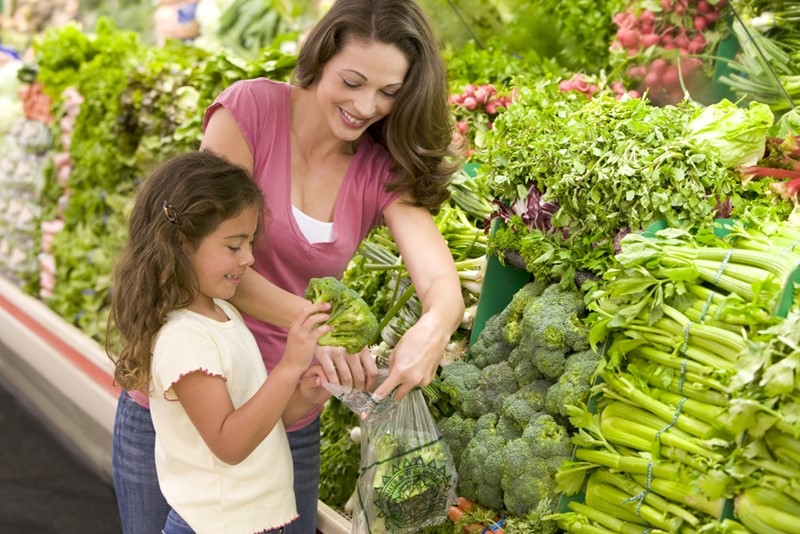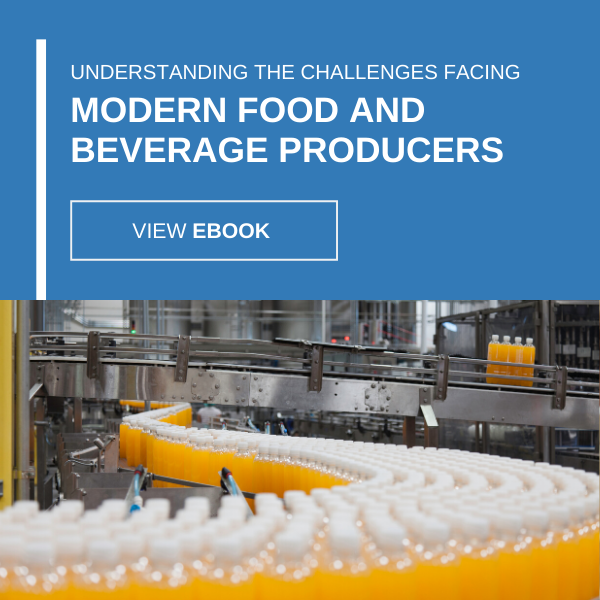
Is Your Food and Beverage Company Hungry for More Market Share?
Competition in the food and beverage industry has always been high. When one-sixth of every dollar produced by all U.S. industrial businesses comes from F&B, not much else demonstrates the same level of value to investors. Increased market concentration, however, has pushed companies back on their heels and challenged them to rethink their operations.
It’s first come, first served in the world of food and beverage manufacturing. Where should your business focus its attention if it wants a seat at the table?
Agility in the face of anything and everything
Food and beverage, by nature, craves a streamlined, consistent production process. How else could manufacturers expect to produce against such high and persistent demand for their goods?
Yet despite that understandable urge to standardize wherever possible, F&B firms cannot deny the myriad of variables they contend with daily: world economies affecting all the places from which they source their ingredients, regulations on how to produce and ship goods, consumer opinions and interests regarding packaging and merchandising, etc.
Building fixed production processes without any capacity for adaptation is like expecting your car’s cruise control to steer for you. Similarly, food and beverage companies must imbue their processes with enhanced responsiveness to fluctuations, particularly when it comes to their supply chains. U.S. bread producers, for example, no doubt remember how the wholesale price of eggs skyrocketed in 2015 because of an outbreak of avian flu. Since then, businesses have undoubtedly built disaster recovery plans around potential shortages of key supplies, perhaps even created whole new products with the market strength to carry them through tough times.
But why wait for a crisis to plan for one? Businesses in industries like F&B that mass produce ought to take a page from the custom manufacturing playbook: There is a lot competitive value in learning how to lean into a curve, and not only to avoid risk, either.
Big data should mean speedier R&D
Leveraging consumer data has never been a strength for food and beverage producers, but it is fast becoming an incredible indicator of value as millennials take over supermarket sales across the country. Between 2010 and 2015, the top 25 U.S. Food and beverage companies lost a combined $18 billion to outliers, according to Fortune senior writer Beth Kowitt. Who diverted those funds to smaller industry players? Primarily millennials.
How did those businesses convince millennials to do it? They anticipated the desires of the modern consumer and had products to match those desires available. Nothing new there, but these companies performed these actions at record-breaking paces.
Consumer trend cycles are only accelerating. Any business that fails to innovate with customer data rapidly and accurately will continue to lose market share to small businesses that can. In recent years, organizations such as Diamond Foods and Nestle have invested significant capital in research and development facilities that experiment with recipes and packaging. Nestle even has test kitchens where its staff studies how consumers interact with products in a real-world setting. Monitoring in house has the added benefits of confidentiality, direct analysis, and immediate application, too.
When thinking of all the best ways to leverage end-user data, businesses should not limit themselves to information technology but rather utilization in action. How fast can you move when the next great idea presents itself?
Focus on freshness at the retail level
What’s the most widely known unwritten rule of healthy shopping? If you want to eat better, shop around the perimeter of the grocery store where you find fresh produce, whole milk products, and unprocessed proteins.

When customers buy for freshness, should you go to them or make them come to you?
Whether or not that homespun shopping philosophy is actually true, F&B companies have responded as though it is by acquiring brands with a presence in this territory, as well as developing goods that can break into these areas. More than one-fifth of shoppers spent more money on “fresh perishable items” in 2016 than 2015, and more than one-third base their decisions on where to shop on the “quality and variety of fresh foods,” according to research from the Food Marketing Institute. It’s gotten to the point where retailers are using freshness to define their entire retail operations.
To compete, manufacturers must think less about merchandising and more about how to align their product messaging around freshness with that of how their retailers relate freshness to customers. That includes, but is not limited to, marketing how minimally processed goods are or reducing the sheer number of ingredients in certain product recipes. Not only are these changes promotional, but they can also lead to material and production savings if manufacturers play their cards right. Once customers associate a certain product with freshness, they will happily travel to whatever section of the supermarket that product is housed in. The trick is planting the seed.
For more information on fleshing out a competitive Food and Beverage strategy, contact a USC Consulting Group representative today.





